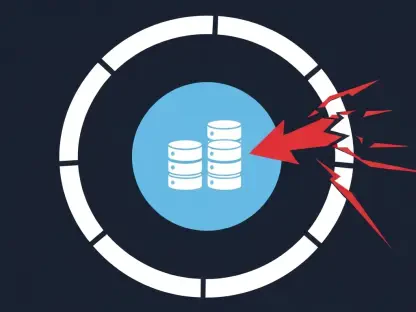Oscar Vail, known for his pioneering work in emerging technologies such as quantum computing and robotics, is now exploring new frontiers with open-source projects that aim to enhance business operations. Today, Oscar will share his insights on improving the efficiency of Lisbon’s tuk tuk industry through digital innovation.
Can you provide some background on Lisbon’s tuk tuk industry and its importance to tourism?
Lisbon’s tuk tuks have become a charming and essential component of the city’s tourism landscape. They offer guided tours with unique perspectives on the city’s historical and cultural landmarks, attracting both local and international visitors. The industry’s growth underscores its importance, as it contributes significantly to local tourism earnings.
What are the main challenges that tuk tuk companies face currently?
The primary challenges revolve around operational efficiency. Many of these companies rely on outdated and manual processes for fleet management, which are prone to errors and inefficiencies. This hinders their ability to scale operations effectively and meet the growing demand for their services.
How do tuk tuk companies in Lisbon typically manage their fleets and daily operations?
Typically, tuk tuk companies manage their fleets through daily service sheets that drivers fill out by hand after each trip. These sheets record basic operational details, which managers later manually transcribe into a central system. This process is not only time-consuming but also error-prone.
Can you describe the manual process that drivers and managers use for logging data?
Drivers jot down details like trip durations, passenger numbers, and route specifics on paper service sheets. Later, managers collect these sheets and enter the data into spreadsheets or databases. This method is slow and fraught with inaccuracies, leading to inefficiencies in monitoring and managing the fleet.
What are the specific inefficiencies associated with the current manual processes?
The manual processes lead to various inefficiencies, including data entry errors, delayed information processing, and difficulty in accessing timely insights. These challenges impede quick decision-making and optimal resource allocation, which are crucial for maintaining high service standards.
How does the manual data logging contribute to errors in fleet management?
Manual data logging introduces a significant margin for human error, from misread entries to misplaced sheets. These inaccuracies can skew operational metrics and lead to suboptimal decisions, such as improper scheduling or maintenance mismanagement, ultimately affecting service quality.
What inspired your research into improving tuk tuk fleet management?
The inspiration struck from observing the stark inefficiencies within the manual processes of the tuk tuk industry. The potential for streamlined, automated solutions that could alleviate these inefficiencies was evident, driving our research towards creating a more effective management system.
How did you identify the opportunity to enhance productivity in the tuk tuk sector?
Through detailed analysis, we pinpointed pain points such as error-prone data logging and time-consuming paperwork. Recognizing the impact these issues had on overall productivity, we saw a clear opportunity to introduce automation and real-time data processing to revolutionize fleet management.
What exactly is Tuksy and what components does it include?
Tuksy is an innovative application designed to digitalize and streamline tuk tuk operations. It includes a mobile app for drivers to input service data directly, and a desktop app for managers to track and analyze this data in real-time. This dual-component system aims to eliminate paper records and improve operational efficiency.
How does the mobile app for drivers function and what kind of data do they input?
The mobile app enables drivers to input detailed service data such as trip duration, passenger count, and route information directly following each trip. The app is user-friendly, facilitating quick data entry and ensuring accurate real-time logging.
How does the Tuksy system improve data accuracy and reduce errors?
By transitioning from paper to digital entry, Tuksy significantly minimizes the risk of human error. Automated data validation and real-time synchronization ensure that information is accurate and readily accessible, facilitating better decision-making and resource management.
In what ways can Tuksy free up valuable time for tuk tuk drivers and managers?
The system streamlines data entry and processing, allowing drivers to focus more on delivering exceptional service rather than handling paperwork. Managers benefit from instant access to accurate data, accelerating the decision-making process and freeing them from the cumbersome task of manual data entry.
How does the desktop app component of Tuksy help managers track and analyze data in real-time?
The desktop app offers managers a comprehensive dashboard that visualizes real-time data. It includes analytics tools to monitor key metrics such as fleet utilization, performance trends, and maintenance schedules, enabling proactive management and strategic planning.
What kind of insights can managers derive from Tuksy’s data analysis features?
Managers can gain valuable insights into operational efficiency, driver performance, and customer satisfaction. The analytical capabilities of Tuksy allow for identifying trends, forecasting demand, optimizing routes, and scheduling preventive maintenance, all of which enhance overall productivity.
How could a system like Tuksy serve as a model for other small businesses in the tourism sector?
Tuksy’s design is easily adaptable to various tourism-related businesses that face similar operational challenges. By implementing similar digital solutions, small businesses can streamline their processes, improve accuracy, and enhance customer experiences, ultimately driving growth and competitiveness in the sector.
What potential do you see for similar technologies in enhancing the efficiency of other types of tourism-related businesses?
The potential is vast. Technologies like Tuksy can revolutionize the way data is handled across the tourism industry, from hospitality services to guided tours. These solutions can foster seamless integration of operational data, providing businesses with robust tools for improving management efficiency and customer satisfaction.
Are there any plans to expand Tuksy to other cities or regions?
Yes, we are exploring opportunities to expand Tuksy beyond Lisbon. The goal is to adapt the system to the specific needs of tuk tuk operators in other cities where tourism plays a significant role. By tailoring the application to different environments, we aim to enhance the operational efficiency of tuk tuk fleets globally.
How do you envision the evolution of digital solutions in the tourism sector over the next five years?
In the next five years, digital solutions will likely become integral to tourism management, driving efficiency and enhancing customer experiences. Advancements in AI, IoT, and data analytics will provide businesses with deeper insights, enabling personalized services and optimized operations that keep pace with evolving consumer demands.
What advice would you give to small tourism companies considering the shift to digital management systems?
Start with a clear understanding of your operational challenges and identify where digital solutions can add the most value. Invest in user-friendly tools that offer scalability and real-time analytics. Embrace the change proactively, and leverage these systems to gain competitive advantages while maintaining the unique elements that define your business.









